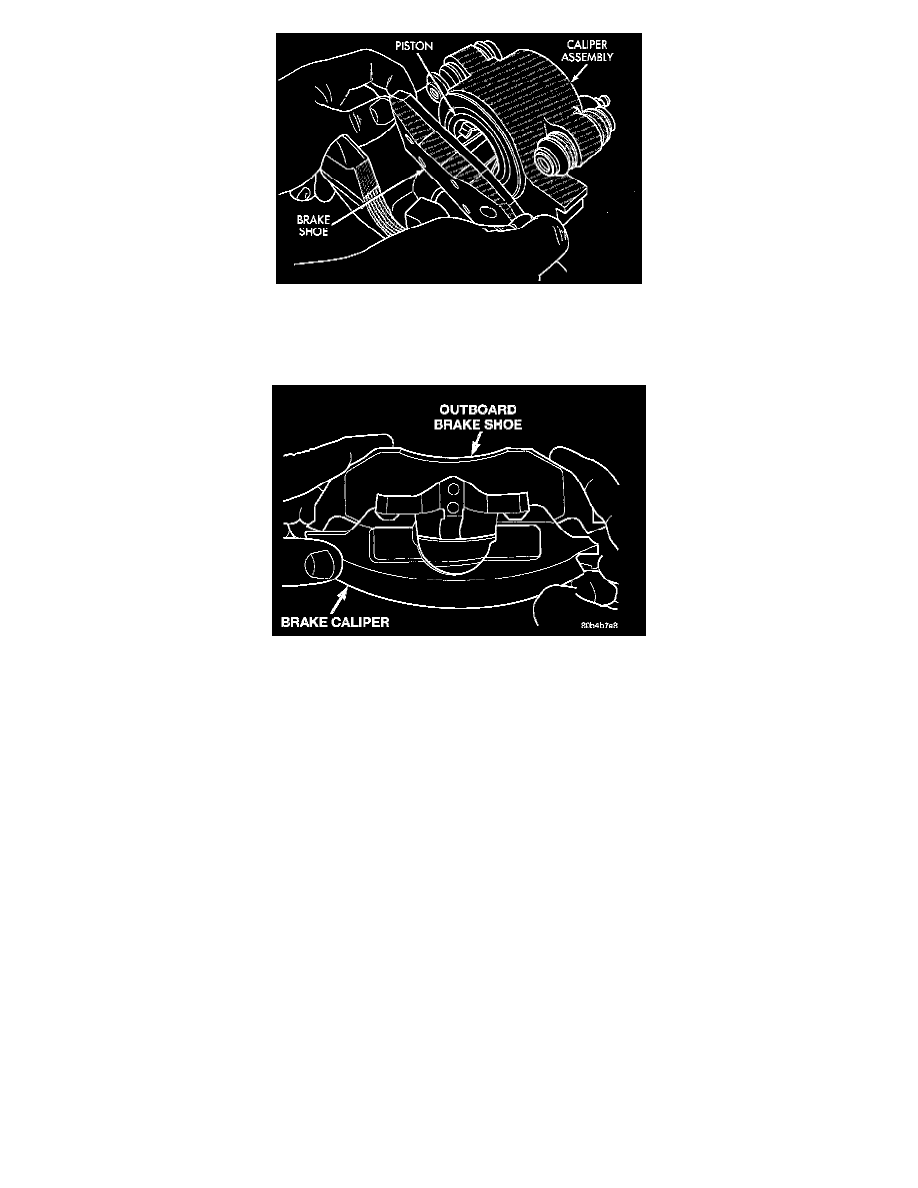Prowler V6-3.5L VIN G (1999)

Inboard Brake Shoe
4. Install the inboard brake shoe into the caliper piston by firmly pressing it into the piston. Be sure inboard brake shoe is positioned squarely against
the face of the caliper piston.
Installing Outboard Brake Shoe
5. Slide the outboard brake shoe onto the caliper.
Caution: Use care when installing the caliper onto the caliper adapter so the seals on the caliper guide pin bushings do not get damaged.
6. Install disc brake caliper on caliper adapter, reversing the removal procedure.
Caution: When installing the caliper guide pin bolts be careful not to cross thread the bolts into the caliper adapter.
7. Install the caliper guide pin bolts. Tighten the guide pin bolts to a torque of 27 Nm (20 ft. lbs.).
8. Install the wheels and tires.
9. Tighten the wheel mounting stud nuts in proper sequence until all nuts are torqued to half of the specified torque. Then repeat the tightening
sequence to the full specified torque of 135 Nm (100 ft. lbs.).
10. Install the center cap on the wheel.
11. Remove jackstands or lower hoist.
Note: Before moving vehicle, pump the brake pedal several times to insure the vehicle has a firm brake pedal.
12. Road test the vehicle and make several stops to wear off any foreign material on the brakes and to seat the brake pads.
Cleaning and Inspection
Caution: The rear disc brake rotors used on this vehicle are made from aluminum. For this reason, only Mopar Original Equipment Manufacturer
(OEM) replacement brake shoes using the OEM friction material are to be used when brake shoe replacement is required. If brake shoes using friction
material other then the OEM friction material are used with the aluminum rotors, severe scoring of the rotor braking surfaces will occur. If the braking
surfaces of the rotor become scored replacement of the rotor will be required. The rear disc brake rotor used on this vehicle can not be machined.
To check the amount of lining wear, remove the wheels and tires.
If a visual inspection does not adequately determine the condition of lining (friction material) on the rear brake shoes, a physical inspection will be
